Three European City Breaks To Book Now

Looking for a spring getaway?
Quieter than its big sister Barcelona, Madrid starts to shed her winter skin in March when, as if by magic, a wave of warmth engulfs this fascinating city. Temperatures stay at a very manageable 20C in spring compared to the incessant heat of summer, so you can explore the city without breaking a sweat.
A walking tour is the best way to take in the city’s sites. Start in the Puerta del Sol, before heading over to the pretty 400-year old Plaza Mayor. This historic square is framed by red brick buildings, with its 237 balconies all overlooking the central space. Grab a coffee in one of the central cafés before jumping into the neighbouring Mercado de San Miguel, with Michelin-worthy paella and ice-cream just part of what you can find in this gourmet market. The nearby Almunena Cathedral and the Palacio Real, one of the largest Royal Palaces in Europe and home to the Kings of Spain from Charles III to Alfonso XIII, are well worth a visit, as are the Opera House and Madrid’s Neoclassical city hall, the Palacio de Cibeles. Book in advance to get into the Prado where you’ll find the best Goya and Velazquez collections in the world and spend the morning wandering through this stunning space. That done, head to the nearby Retiro Park. It’s where the locals go and is a great place to stop off for a little shade from the spring sunshine and watch the world go by.
For a bit more culture, head back down to the Reina Sofia Museum, a former hospital which is now home to works by Dali, Miró and Gris, as well as Picasso’s famous Guernica. Madrid’s newest cool spot is the Madrid Rio, a recentlyrenovated area with a beach and plenty of water spouts in which to cool off, whilst shoppers should head to the Mercado de Motores, a fascinating local market where you will find everything from local jam to vintage flamenco dresses, or to Saleas where you can find the much-blogged clothes shops including Pez.
Madrid’s a friendly place and the locals love to be asked for help with anything from directions to where to find the best tapas, and it’s the tiny traditional bars and restaurants that are the soul of this vibrant city. And whilst new gastrobars are opening all the time, the old way is still the best way, and Madrid is home to the oldest restaurant in the world, Botín, and many other eateries which date back hundreds of years. But whether you want traditional tapas, or a trendy eatery, there are plenty of food tours to follow which take you around the city’s most vibrant neighbourhoods.
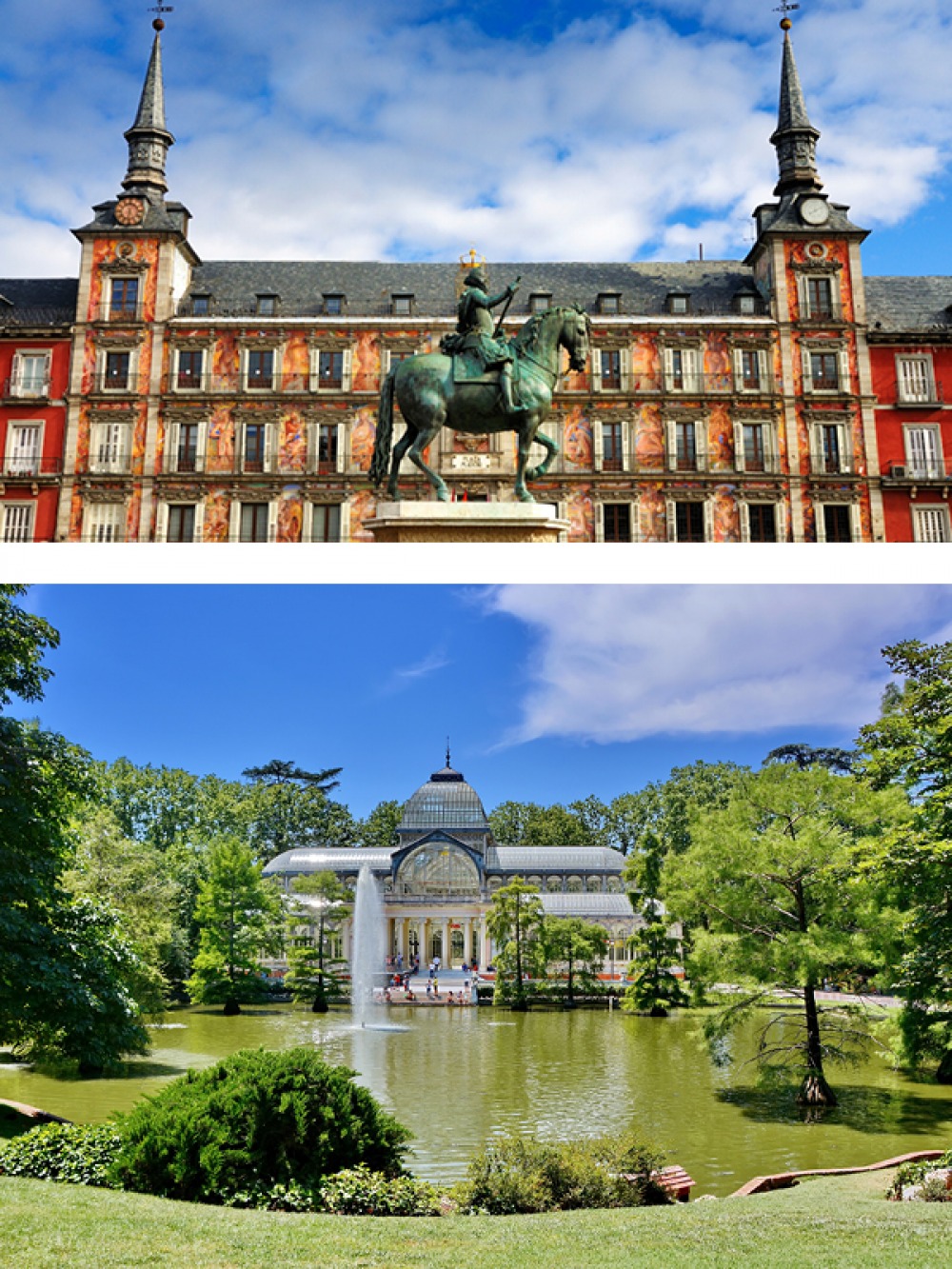
Where to Eat
Bodega de los Secretos is a romantic underground restaurant hidden away in a labyrinth of former wine cellars which date back to the 17th century. The menu is modern Spanish dishes including grilled octopus and oxtail rolls.
According to the Guinness Book of Records, Botín, which opened in 1725, is officially the oldest restaurant in the world. Renowned for its roast suckling pig and lamb, which are cooked in the huge wood-fired oven that has been there since it opened, also worth trying are the hake and clams in the house speciality sauce. Unsurprisingly, Botín is hugely popular with visitors and its four doors are always busy, but it somehow still remains a typically Madrileños experience, and fans of Ernest Hemingway can ask to sit at his favourite table.
For a traditional tapas experience head to Cabreira. This local restaurant with pavement tables is found in the boho Malasaña area. With a friendly atmosphere (and busy with locals late into the night) it’s where you’ll find delicious patatas a la churri (sautéed potatoes with scrambled egg, onion and garlic), moreish fried aubergine with honey and gambas al ajillo (prawns sizzling in oil with lots of garlic and chilli).
Where to Stay
Palacio De los Duques is a five-star hotel in a remodelled 19th century palace. Expect outstanding food and service in what is a secret haven in the heart of the city, sandwiched as it is between the Teatro Real opera house and the Palacio Real. Don’t miss the rooftop pool. What it lacks in size, it makes up for in panoramic views across the city to the mountains beyond.
The family-owned 7Islas is half hotel and half gallery, tucked away between the Gran Via and busy Malasana, with polished concrete floors, whitewashed walls and a constantly-changing exhibition space in the lobby. The rooms are all on the top floor and have a private terrace complete with hammock and yoga kit, whilst downstairs the hotel’s chic cocktail bar is hugely popular.
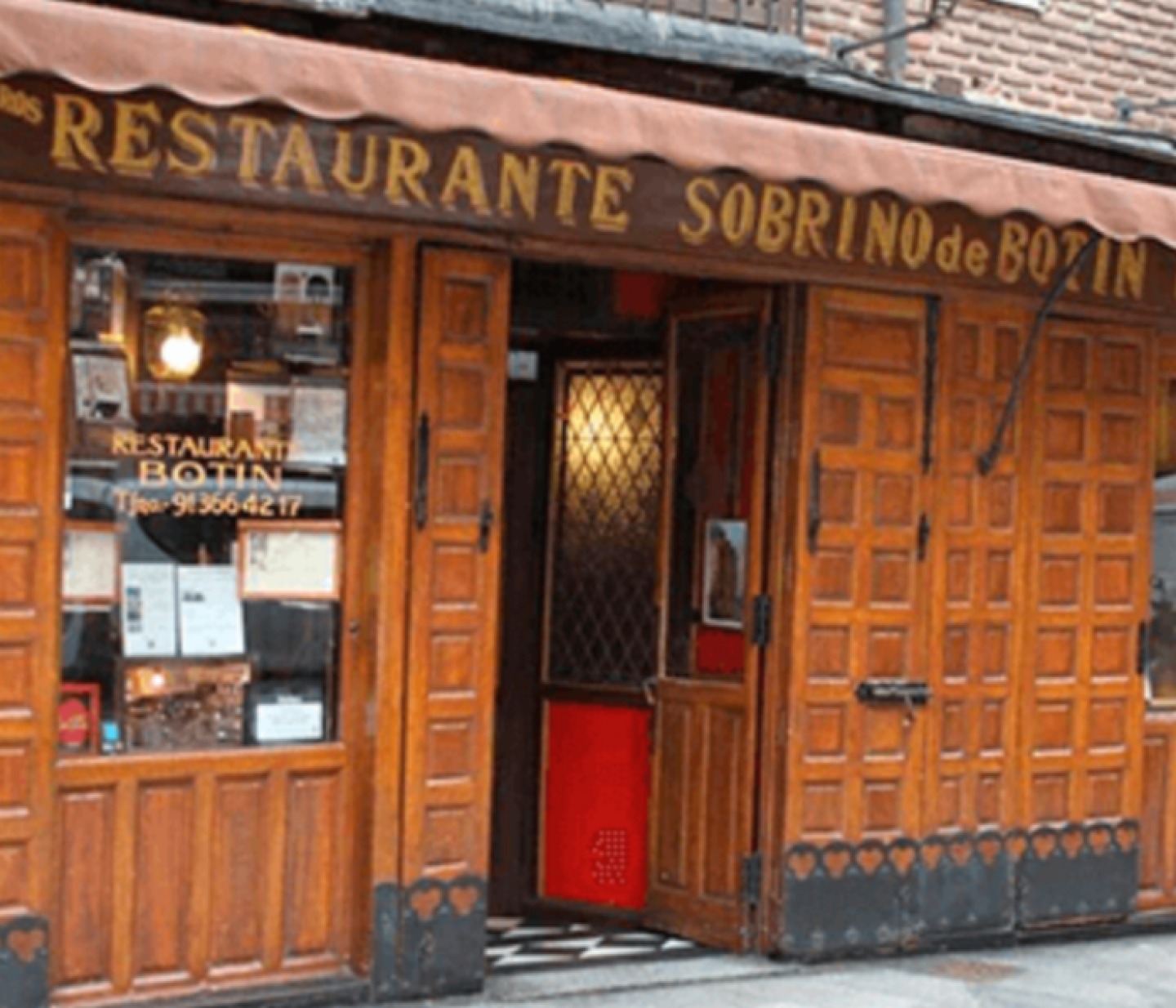
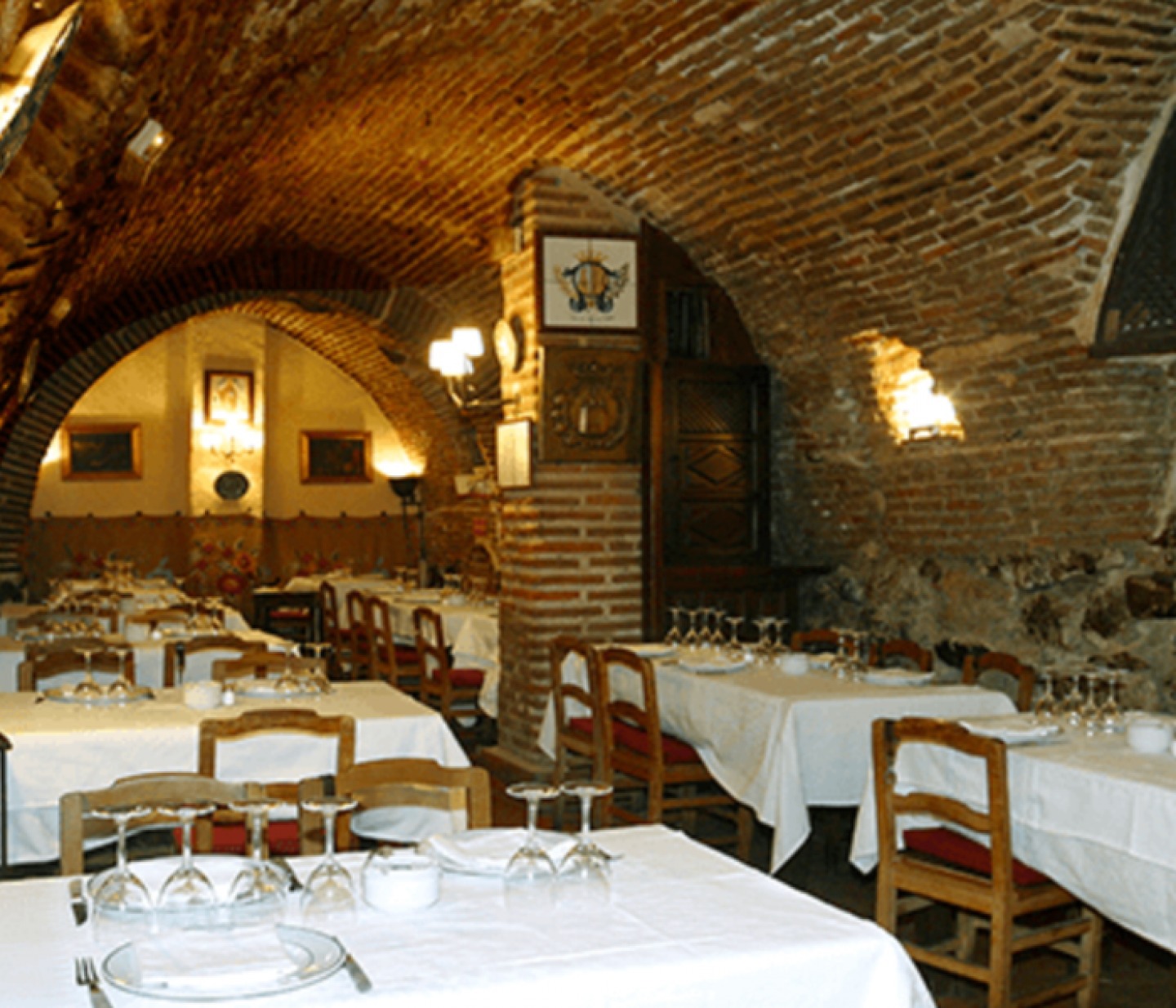

From its old medieval quarter and religious architecture to the many restaurants, beach bars and chic shops, Palma is the perfect mix of culture and leisure, and spring is the best time to see this city before it gets too hot, and too busy.
Founded by the Romans more than 2,000 years ago, and having been occupied by the Byzantines and Moors, Palma offers a heady mix of cultural history. Honey-coloured stone buildings rise up from the waterfront, behind which you’ll find countless boutiques, bars, galleries and craft studios, and many public squares where the locals sit out the heat of the day under the shady trees and café awnings. The Casco Antiguo, the city’s old town, has been carefully preserved and its cobbled lanes, medieval architecture and ancient buildings are where to soak up just some of Palma’s past. The Museum of Mallorca is in the heart of the old town and the vast Gothic Santa Maria cathedral (La Seu) which towers over the Bay of Palma is a must-visit here. Opposite lies the Palau de l’Almudaina. Once a mighty fort, it was converted into the residence forMallorcan monarchs in the 13th century. The Castell de Bellver is a 14th century circular castle, perched on a hillside it offers spectacular views over the hillside to the city and the sparkling bay beneath. Several of the city’s buildings were residences of the wealthy March family, and that includes the palatial Palau March, now a museum with sculptures by Henry Moore, Barbara Hepworth and Rodin outside, and lithographs by Dali inside. Elsewhere, the Es Baluard Museum of Modern & Contemporary Art has a permanent collection of works by Cézanne, Gauguin, Picasso, Miró, Magritte and Giacometti.
Time-poor visitors could do worse than booking the Island Tour, head up to UNESCO World Heritage Site Serra de Tramuntana, take a boat trip in the bay, and wander round Port Soller to make the most of your short time here.
Staying a few days? Palma’s long stretch of sandy beach makes for a perfectly pleasant place to while away an afternoon and is bookended by two popular beach clubs. If you prefer to stay away from the sand, Palma has a myriad of designer boutiques, trendy restaurants and cool pavement cafés perfect for people watching.
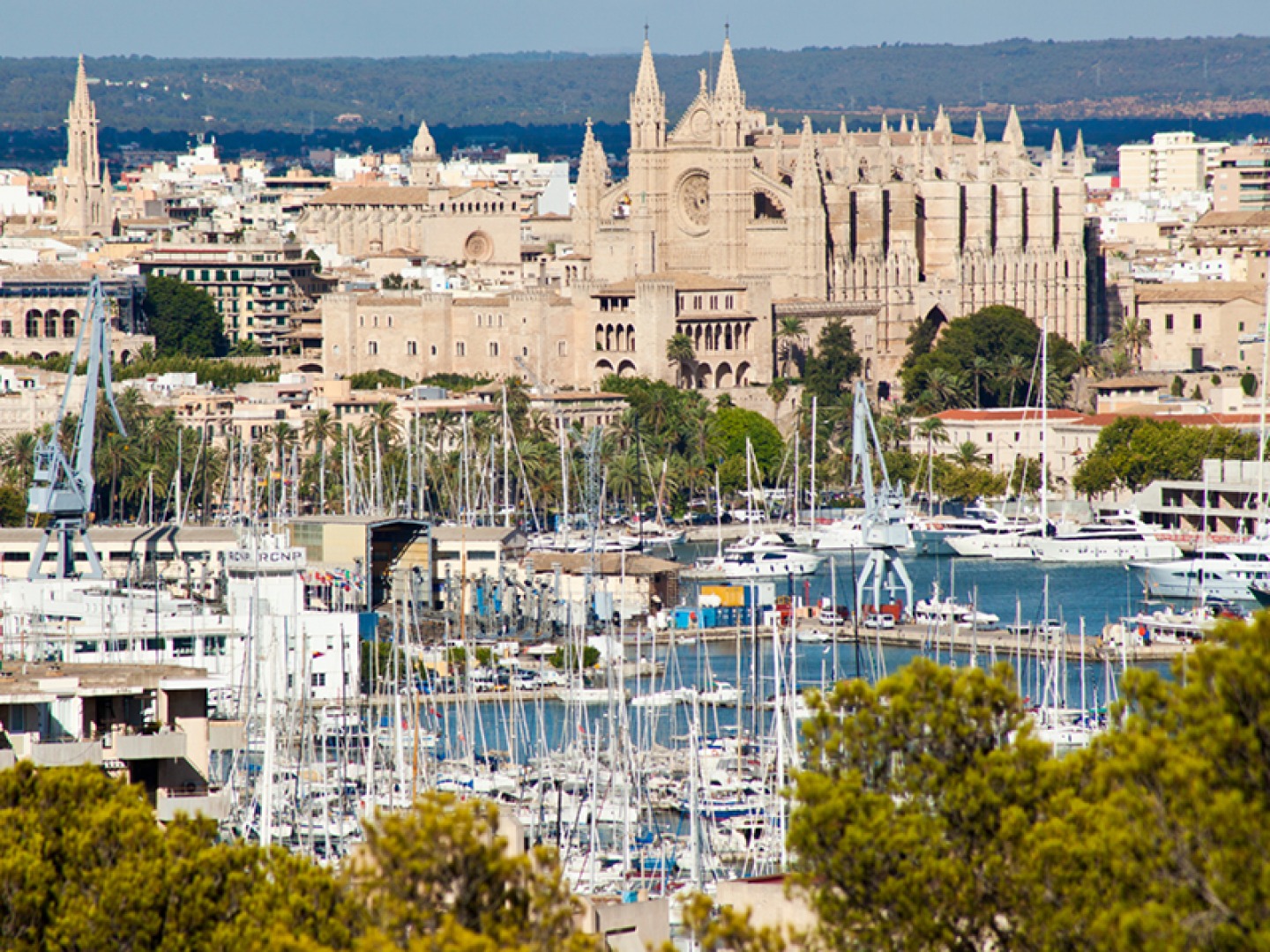

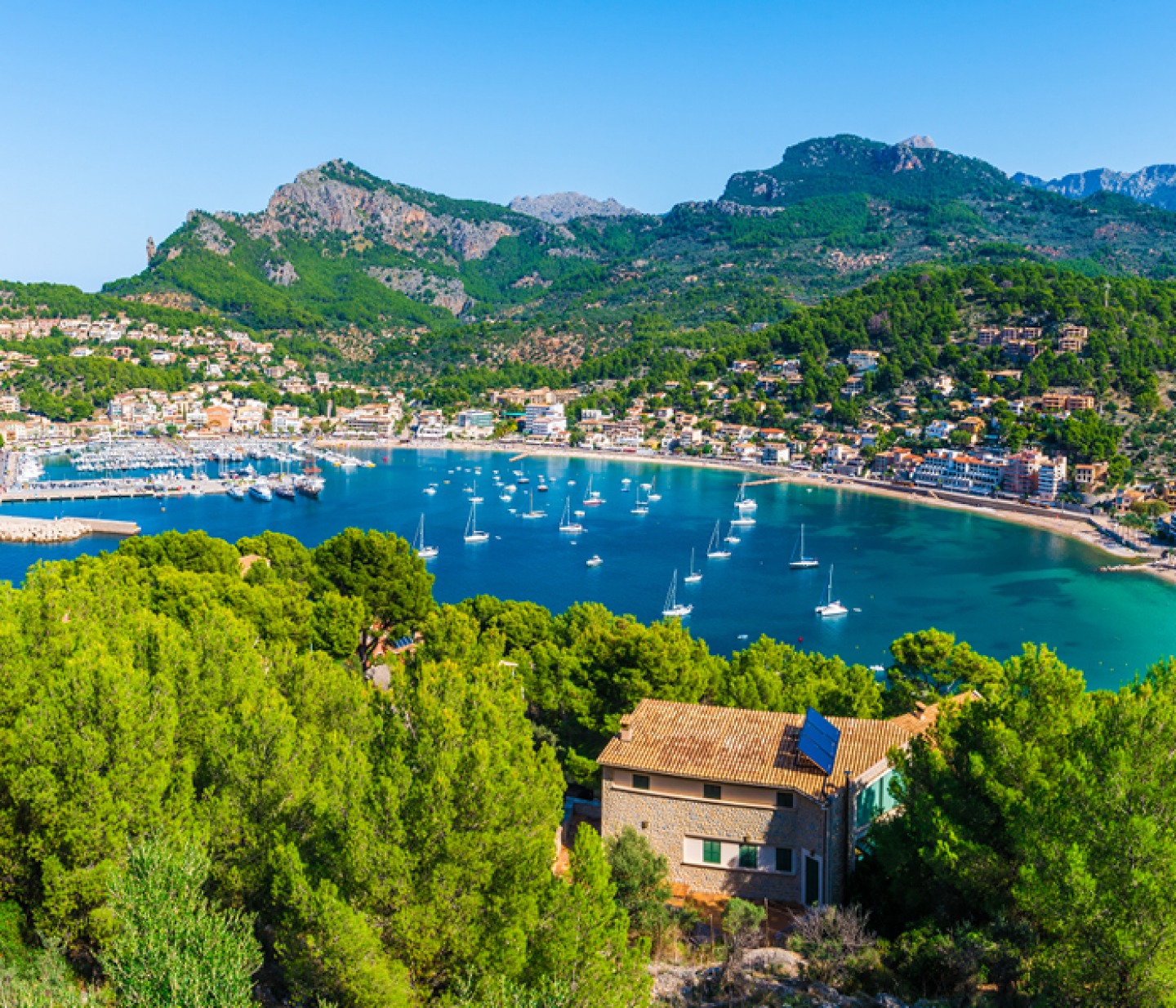
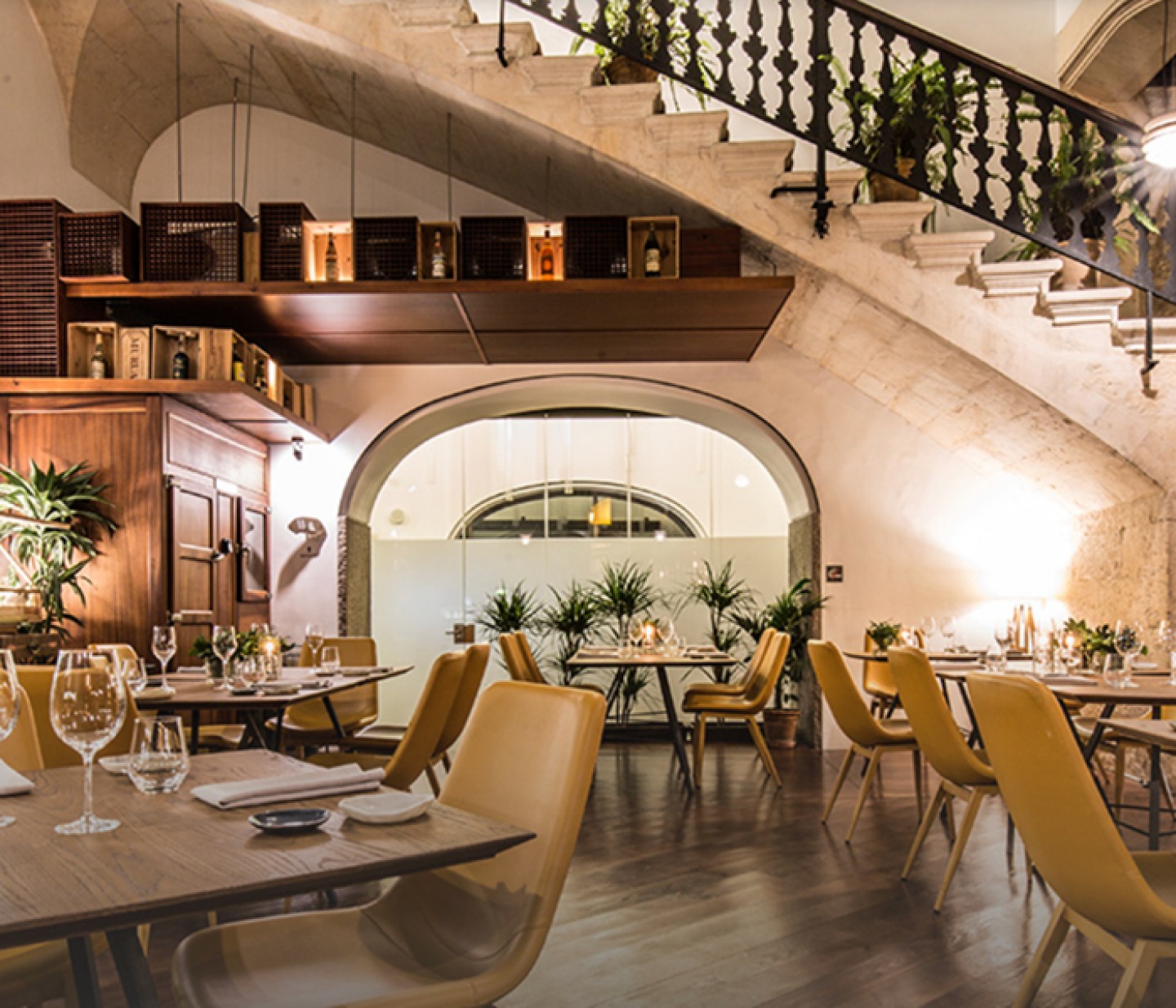
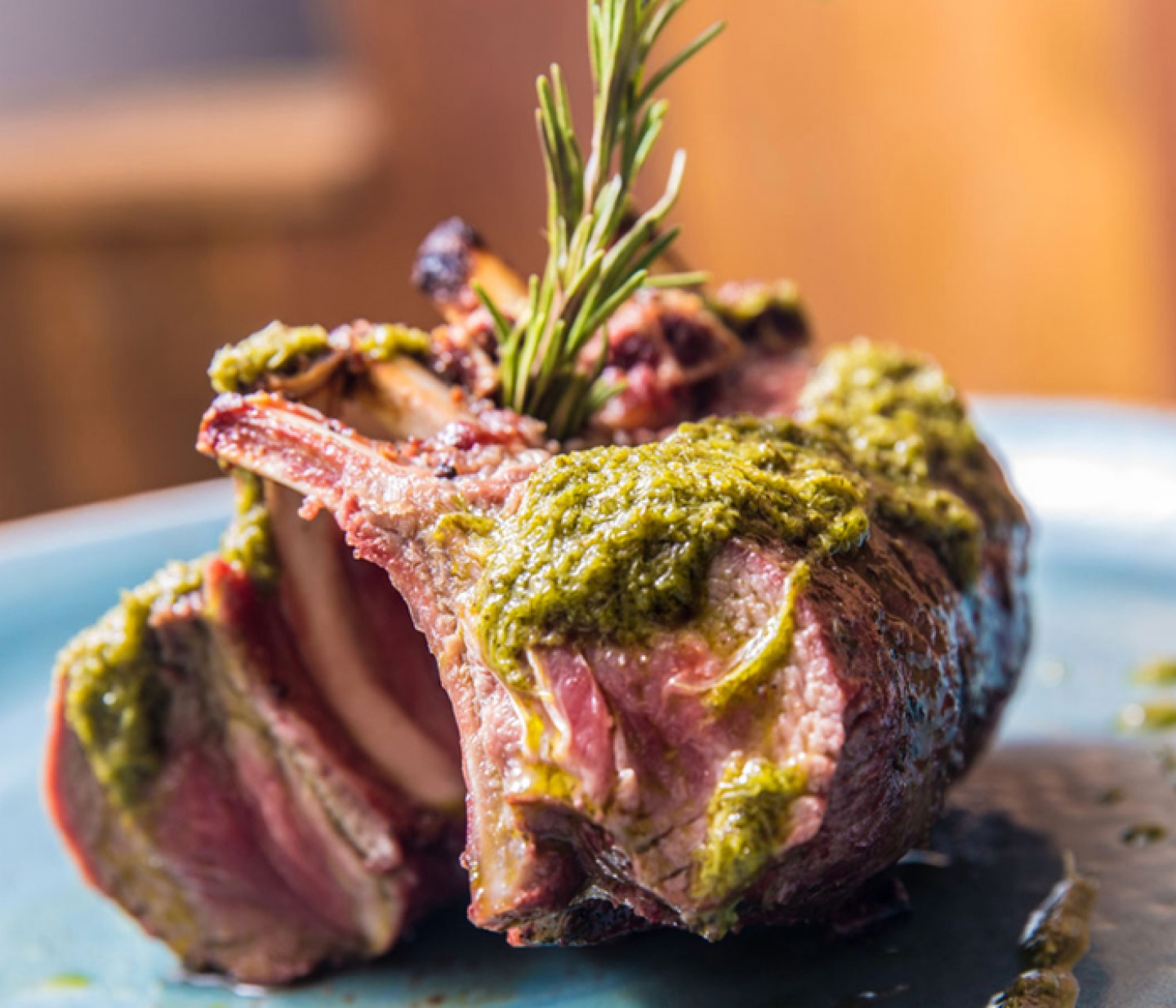
Where to Eat
You might recognise Sadrassana from the epic TV series The Night Manager. Chosen for its Mallorca feel, the art gallery-cum-restaurant and cocktail bar is in an old 19th century Mallorca mansion in the heart of Palma’s old town. The menu is a mix of traditional dishes which sit alongside more contemporary creations, there’s a great wine and cocktail list, but most of all you’ll just love the whole vibe here.
Described as rustic and robust, Aromata is always buzzing day and night. Combining original architectural features with contemporary furniture, it’s a beautiful place, but it’s the food that attracts the diners. Serving what chef Andreu Genestra calls ‘the essence of Mallorca’, try the midday menu which changes weekly, or for dinner there’s a four-course and six-course tasting menu. Book in advance if you can – it’s rightly hugely popular.
Pesquero is a waterfront restaurant and bar renowned for its seafood – you can even watch the fish being landed from the local boats on the quayside below. There’s a bar on the outdoor terrace and sliding glass doors in the restaurant make the most of the view. Locals make the most of the goodvalue three-course, menú del día here, which is served Monday to Friday.
Koa, part of famous Forn group, is a chic, contemporary restaurant serving cutting edge dishes seared over charcoal. Head here for delicious grilled meat, fish and tapas with a twist.
Where to Stay
The Hotel Can Alomar is a five-star haven in the heart of Palma, surrounded by the city’s chic shops, galleries and restaurants. Escape to the rooftop pool to soak up the spring sunshine, or the hotel’s elegant terraced restaurant which serves exciting fusion cuisine under the watchful eye of chef German de Bernardi.
Overlooking the sea in Pexitol Harbour, Hotel Portixol boutique hotel is just metres away from the Med, and the city’s stunning cathedral. The 50s facade hides a chic Scandi-style interior flooded with light, and the sun-lit terrace restaurant looks out over the harbour.
Known for its rich history, great food and amazing architecture, Budapest also has a vibrant nightlife, the locals are super-friendly, and it’s wallet-friendly too.
A city famous for its Chain Bridge which connects the original towns of Buda and Pest (not officially united until 1873) as it hovers over the great Danube, Budapest is also referred to as the ‘cultural cradle of Europe’. The first bridge in the city, the Chain Bridge was commissioned by Count Istvan Szechenyi, a man considered the greatest Hungarian, he sadly never got the chance to cross the completed bridge (he allegedly fell into the Danube during its construction). Now guarded by the four stone lions of Janos Marschalko, it appears on every postcard of Budapest.
Hungary’s Parliament is also world famous, with symbols typical of Hungary such as poppy bulbs and daisies incorporated into the design, as are Budapest’s many thermal baths – all 118 medicinal springs. Bathing culture in this part of the world can be traced back to the Turkish occupation in the 19th century when many of the Turkish Baths were opened. For atmosphere you’ll want the larger spas; Széchenyi, Rudas and Gellért, but to avoid the crowds, head to hidden beauties such as Dandar, Veli Bej and Kiraly Baths.
The party district (District 7) is where cultures collide, cosy ‘ruin’ bars, local pubs and luxury restaurants make up the eclectic mix, the amazing atmosphere being the only constant. Bars spring up in discussed properties and warehouses, the interiors are always rather strange but there’s an infectious energy to the whole scene here.
Walk off the remnants of the night before by heading up to the Statue of Liberty at the top of Gellert Hill. A popular tourist destination, the panorama from the top makes the effort well worthwhile. The famous Buda Castle is a UNESCO World Heritage Site and has been home to the Hungarian Kings since the 13th century. It’s an architectural masterpiece and other places of note here are St George’s Square and the historical residential area with its narrow little streets which surround the castle.
Don’t miss the historic Matthias Church and the Fishermen’s Bastion before crossing to the Pest side of the river, where you will find the impressive Neo-gothic Parliament building, St Stephen’s Basilica, the Central Market Hall, the largest Synagogue in Europe and Budapest’s world famous zoo. A rather tragic but incredibly moving sight are the 60 pairs of shoes on the bank of the Danube. In 1944 the Arrow Cross Party shot Jews, including women and children, whose bodies fell into the Danube. Randomly selected, they were lined up along the river bank, asked to remove their shoes and then shot. Their shoes, which were valuable, were stolen and resold by the militia, and are represented in this moving iron sculpture erected in 2005, dedicated to those who were massacred.
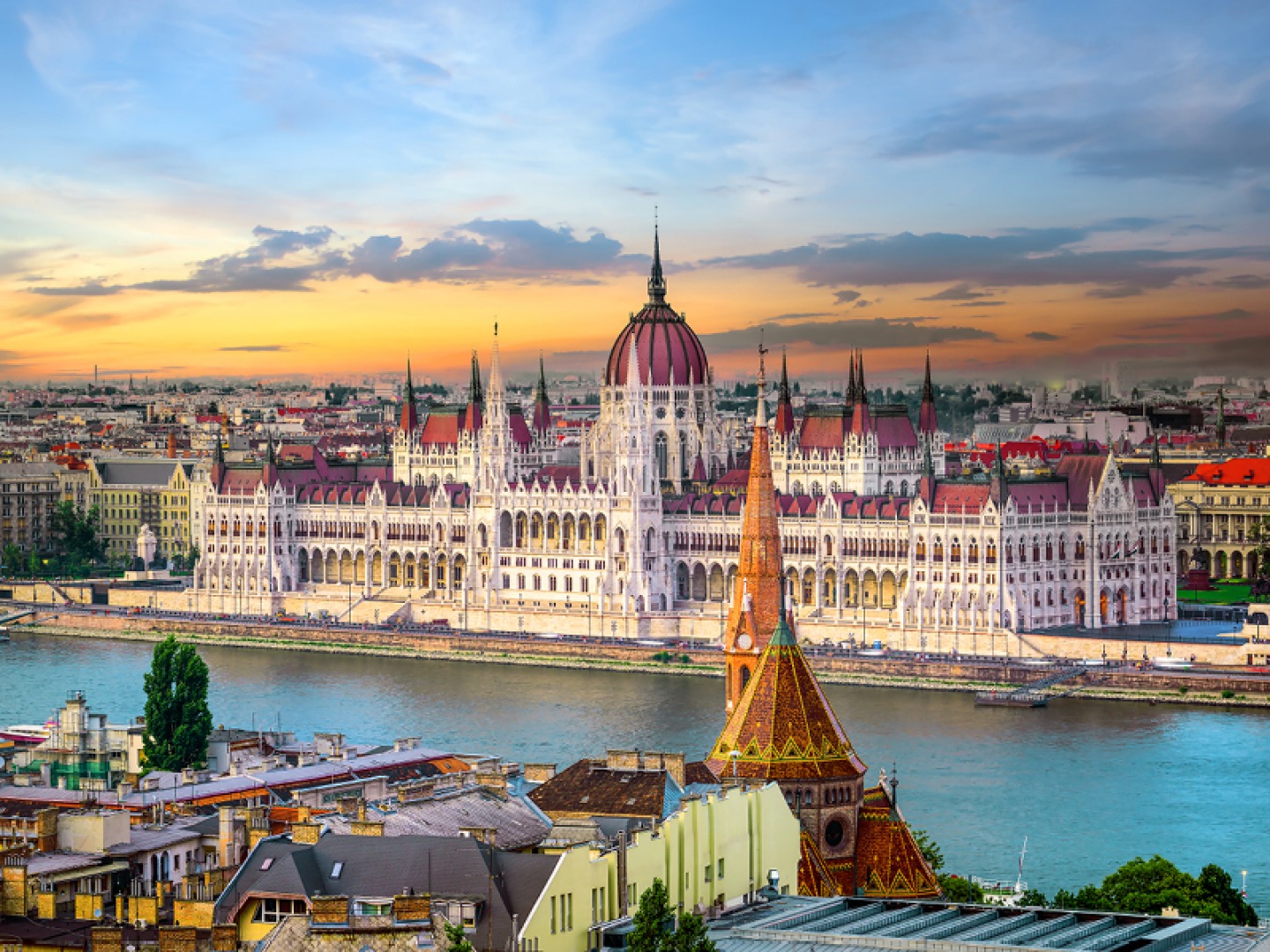

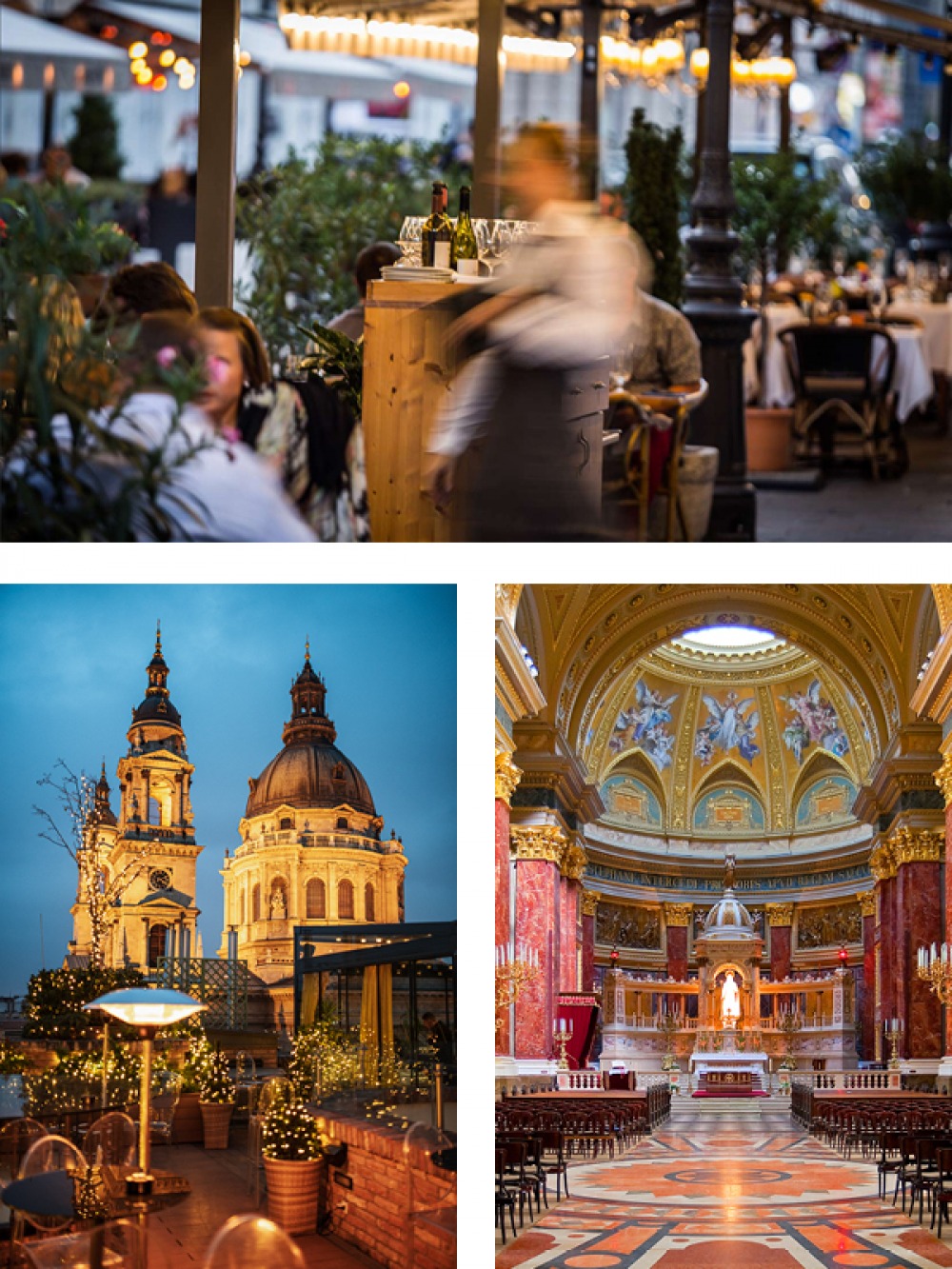
Where to Eat
For foodies, the first choice has to be Borkonyha Winekitchen, a Michelinstarred restaurant with an enticing five course and a la carte menu. Expect to find delicate citrus soup with onion and ginger sitting alongside duck liver and smoked eel, hearty meat dishes such as Iberico pork, black pudding and celeriac, and tempting desserts.
Rosenstein is a family run restaurant serving a hybrid of Jewish and Hungarian classics with a touch of Italian influence thrown in for good measure. A cosy atmosphere, a menu crammed with heart dishes and a well-stocked wine cellar make this a must-visit.
For a taste of Hungary in a contemporary setting head to Borbirosag. The smallish menu includes dishes such as tuna tartare and pork tenderloin and there’s an extensive wine list of over 100 handpicked wines to wash it all down with. Rightly popular, it’s great place to watch the comings and goings from your table on the terrace.
Where to Stay
In the shadow of St Stephen’s Basilica is the music-themed Aria Hotel. The rooms are huge here, there’s a great underground spa and swimming pool and a rooftop bar.
Casati Budapest is a hidden gem. A boutique hotel in downtown Budapest, it has 25 rooms behind its historic facade and although there is no in-hotel dining, (the hotel is surrounded by excellent restaurants), there is is a great cocktail bar, a wellness suite and a complimentary breakfast is served..







